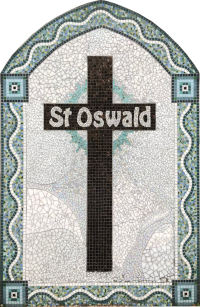Catherine of Siena, who was born on 29th April, 1347, should be the patron saint of anyone who has grown up in a large family, and mastered the two vital skills for survival: how to stand up for yourself, and how to make peace with others.
Catherine had siblings! At least 19 of them, and Catherine was the youngest. Her father was a Sienese dyer, and wanted her to marry, but Catherine did not. She became a nun instead, a member of the Dominican Third Order.
Perhaps after sharing a house with at least 22 people, Catherine wanted some peace and quiet: in any case she spent six years in solitude, giving herself to prayer and penance. Then she moved back into the world, through nursing the local sick people, and then beginning to travel. Catherine travelled frequently, with a number of her ‘disciples’ – a mix of Dominicans and Augustinians, and even an English Friar. Wherever they went, people listened to their proclamation of the total love of God through Jesus Christ, and their calls to reform and repent. There were some spectacular conversions.
Catherine could not write, but soon someone else was taking down her ‘Dialogue’ by dictation – it ran to 383 letters. Catherine’s thoughts centred on Christ crucified, the supreme sign of God’s love for man. The quality of these letters made them widely read for years to come.
A godly woman who could lead and teach! Soon new opportunities presented themselves: in the last five years of her life, Catherine found herself involved in the politics of both State and Church. This included trying to make peace during the Great Schism in the Church after 1378, when Pope Gregory XI died, and two new popes – bitter rivals – claimed the papacy. Catherine wore herself out in trying to promote peace, had a stroke on 21st April 1380, and died eight days later. (A warning to ecumenists everywhere?!)
Catherine soon became Siena’s principal saint, loved for her writings and her example of godliness and self-sacrificing love. Her house and an early portrait survive at Siena, and her memory lives on today: she was declared a Doctor of the Church in 1970, nearly 600 years after her death.
Photo credit: Cristofano Allori, CC BY 4.0 via Wikimedia Commons

